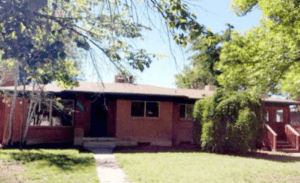Tag Archive for: rental property loans
BRRRR (our 2 Step) IN GRAND JUNCTION, COLORADO
/in Uncategorized$0 Money in from Investor

From close to close in less than 60 days and $0 out of pocket for purchase, rehab or closing.
This investor was able to get his hard money (short -term loan) quickly, purchase this fix and hold and rent, with $0 money down and refinance into a conventional loan in less than 60 days.
We do not see deals with this much built in equity as often as we use to but we still come across them. Great way to start your rental portfolio or to buy and 1031x up to larger multi units.
Hard Money Mike is a lender based in Colorado, lending money on all types of commercial based properties: fix and flip, land, whole tailing, and builder bridge loans.
Investor Real Estate Loans funds investor loans in single family and commercial buildings.
2 Key Pillars of BRRRR
/in Finance Tools, ResourcesBRRRR is great, but did you know there are 2 key pillars of BRRRR that most investors don’t know about? Whether you’re just starting out with real estate investing, or you’re an ol’ pro, you should consider taking advantage of these crucial steps to ensure you don’t miss out on cash boosting opportunities.
Take a look at this video and learn about the two key pillars of the BRRRR method.
If you invest in rental properties, then you need to:
- Buy under market properties (i.e. wholesale).
- Use the Quick to Buy, Quick to Refi strategy.
These steps help you maximize your loan amount while limiting the cash you need to put into each deal. They also ensure you’re able to buy more deals and build your portfolio at a faster pace.
Through research and conversations, we discovered many investors are confused about how to get going on a deal with little to no money. So, we’ve taken a step back and tried to figure out why that is.
We found out many investors don’t understand the power of the appraisal/ARV. When you get into a long-term loan, you get to use the appraisal value/ARV. It doesn’t matter what you originally paid for the property or the amount of money you put in to fix it up. As long as you set up the loan properly, then you should be able to use the appraised value/ARV.
If you’re ready to maximize your cash flow, capture lots of free equity, and live the life you want, check out the full video.
Want more videos with more tips to maximize your cash flow? Subscribe to our new YouTube channel!
5 Ways to Find Wholesale Leads and Deals
/in Resources5 Ways to Find Wholesale Leads and Deals
One of the best ways to make the most on your investments is to find wholesale deals. But, how do you do that? Well, here are 5 tips from REIClub.com. Check them out!
Ready to learn more? Contact us today!
BRRRR Is Out, BARRRR Is In
/in ResourcesCheck out this article from Bigger Pockets! There’s a brand new, enhanced way to look at the BRRRR strategy that could save you a lot of money.
It’s called BARRR: Buy, ADVERTISE, rehab, rent, refinance, repeat.

“Consider it a much-needed addition that has the potential to save you tax dollars, perhaps allowing you to take your spouse out to that super high-end restaurant downtown…”
Read all about the BARRRR strategy here!
Investor Mortgage Report 6.16.2020
/in Motivation, Resources, TipsWhat We Know:
Rates on the conventional side have maintained strong with rates in the low 3’s. If you’re still wondering whether or not you should refinance, we’re going to dive into what we call ‘The Tipping Point Rate.’
This week, we’re seeing more larger non-conventional companies dipping their toes back into the investor loan water. This gentle ease back in helps increase liquidity, but it still comes at a price: Lower LTVs and higher costs.
What This Means for You:
There is an exact rate where it’s wise to refinance. We call this ‘The Tipping Point Rate.’ This specific rate is the point where you won’t pay a penny more in principal and interest over the life of the loan.

Going above this point might increase your cash flow, but it will end up costing you more in the long run. Sometimes this means it’s better to stick with what you have now. We’re focused on putting more money in your pocket and less in the bank’s pocket.
This is for investors looking to increase monthly cash flow without adding lifetime cost of debt. So, if you’re solely concerned about your monthly cash flow, this probably isn’t the program for you.
So how does this work? Let’s take a look at an example.
Joe is an investor who is looking at refinancing to increase his cash flow every month. But not if it means paying tens of thousands of dollars extra to the bank in principal and interest.
Joe has been paying his current mortgage for 5 years. If he keeps the loan until it’s paid in full, he’ll end up paying $360k in payments over the next 25 years.
Joe wants to know the exact rate that he can refinance to a new 30-year fixed without increasing his amount owed. If it exceeds $360k, then he won’t refinance.
By knowing this exact rate, he can stretch his payments out and lower his interest rate without paying a penny more over the life of the loan.
How do we find Joe’s Tipping Point Rate?
Luckily, we have a handy program that can calculate just that. If you would like to know your own Tipping Point Rate, send us an email! We’ll run the report specifically for you and your property!
Note: Investor Real Estate Loans doesn’t currently lend in all states, but we are always happy to help and make sure you understand your numbers!
*All non-commercial and construction loans offered by TNS Loans NMLS #1719349
Investor Mortgage Report 6.4.2020
/in Finance Tools, Resources, Tips
Thankfully, it’s looking like another great week for standard conventional mortgage rates.
So far this week, all evidence is pointing towards increasing stability and improvements on the conventional mortgage front.
- Depending on whether you pay your mortgage person points or you have them wrapped into your loan, rates fluctuate between low 3’s and low 4’s.
- We’re seeing great rates on the conforming side.
- Every week, the non-traditional loans are reappearing with increased frequency.
- Some lenders have decreased credit score requirements to 680.
- Rates are still on average above 7%, but signs are showing that they will drop soon.
- LTVs are inching higher, but not to the degree we have seen them in the past.
In short: conventional mortgage interest rates are really good. But what does that mean for you?
How do you know when it’s smart to refinance your rental (or any) property?
Let’s face it: as rates drop, the question of whether or not to refinance runs through all our minds.
Would you like to find out (without the sales pitch from your mortgage person?)
Anyone can crunch the numbers in just a few minutes with just a few items.
Yes. It involves math. But we swear it’s EASY.

For now, all you need is a piece a paper, a pen, a calculator, and your mortgage information. (You can pull this info directly from your mortgage company’s website). Then, follow these three steps:
Step 1: Locate the amount you pay monthly for principal and interest. (Ignore everything but your principal and interest (i.e. taxes and insurance).
Step 2: Locate the number of months remaining on your loan.
Step 3: Multiply your monthly payment by the number of months you have left on your loan.
That’s it!
Let’s look at an example:
A: Your monthly principal and interest payment is $1,200.
B: You have 288 payments left on your loan.
C: $1,200.00 X 288 = $345,600
(Scary sometimes to see how much you really owe, isn’t it? Don’t panic.)
Now, let’s say that you have an opportunity to refinance and lower your interest rate with a new payment of $1,100. Should you do it?
Let’s take a look:
On your new loan, you’d pay $1,100.00 for 30 years (or 360 months). That’s $1,100.00 x 360 = $396,000.00
If you refinance, you’d increase your monthly cash flow $100.00. However, as a result, you’d pay an extra $50,400.00 over the life of your loan!
So, is the extra $100/month worth an extra 72 months (6 years) of mortgage payments? Does refinancing make sense for you financially? Well, that’s up to you.
Perhaps cash flow is more important at this time in your business life and paying the extra years is ok with you. That’s a decision only you can make. At least when you know all the numbers, you can make your call an educated one.
Try it on all your loans and find out what makes sense for you!
Your payments __________________ Months remaining _______________
Total remaining to be paid ___________________
Okay, we’re sure a few questions are swimming around in your head, so we’ll see if we can answer some of the most common ones upfront:
Q: “What if I’m not going to keep the property for 24 or 30 years? At what point does it make sense to refinance?”
A: That’s coming up in the next article.
Q: “What if I want to use those savings and pay down my mortgage?”
A: We’ll be addressing that in a future article as well.
Q: “What is my breakeven interest rate?”
A: There are so many paths you can go down and we’ll cover as many as we can. We’ll also provide a tool for you to run all these scenarios.
Today, it’s all about knowing your raw numbers.
Want an investor tool that can run these numbers (plus your breakeven rate and many more) in seconds? We have one in the works. Just get on our contact list, and we’ll let you know when it’s ready!
By knowing these numbers, you can save tens of thousands on each refinance.
Don’t worry if math isn’t your “thing.” If you don’t feel like doing this or worry the math might overwhelm you, we’ve got your back. Shoot us an email with your current statement and we can run them for you.












